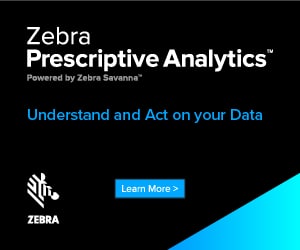It’s time to stop thinking of e-commerce fraud and brick-and-mortar fraud as being in two different worlds. In the rush to create a seamless customer journey, retailers are granting in-store associates unprecedented access to e-commerce functionality, from the ability to apply digital discounts to the flexibility of using any device.
That could create some problems.
In the loss prevention (LP) field, we all know that the faster we grant new privileges to store associates, the more carefully we must watch for fraud. Essentially, the dissolution of channels means that e-commerce fraud and brick and mortar fraud are becoming one in the same, and must be addressed as such. That’s no easy task, as these two channels are often siloed, at least from an LP perspective.
Here are three major points of risk caused by this integration of e-commerce and brick and mortar, plus how a solution called prescriptive analytics can help you mitigate the risk:
Risk #1: Mobile Device Accessibility
Traditional fixed POS terminals are rarely set up to seamlessly integrate with a retailer’s e-commerce system. The integrations that do exist often involve workarounds and homegrown IT solutions to build the right connections. To compensate for this, retailers are rolling out a variety of mobile POS and inventory-management devices to both place orders and verify availability of various e-commerce products. This creates a huge point of risk, as tracking employee activities on fixed POS vs tracking activities on mobile devices are two completely different affairs.
For example, how easy would it be for an associate to take a mobile POS to the back of the store, away from her manager’s oversight, and send a heavily discounted order to a friend? To the eye in the sky, she will probably look like she is simply checking the shelf levels. How this type of activity will be monitored and addressed needs to be considered when rolling out e-commerce responsibilities to employees.
Risk #2: Discounting Privileges
We’ve already seen the intersection of e-commerce and brick and mortar through services like buy-online, pick-up-in-store (BOPIS) and buy-online, return-in-store (BORIS). To offer a truly seamless customer experience, store associates will inevitably need to be granted the capabilities of an e-commerce customer service representative. One critical capability in this scenario is discounting. Your store associates will need access to a variety of discounts, from top- tier -exclusive price reductions, to coupons, to associate discounts, all the way up to the ever-dangerous “customer appeasement,” which offers a dissatisfied customer an order at an enormous discount or even for free in an attempt to correct a previous negative experience.
Retailers with large, bulky or cumbersome merchandise are especially at-risk to this type of fraud, as it’s much easier for a dishonest associate to steal such products via e-commerce, versus trying to physically sneak the awkward or obvious product(s) out of the store.
Risk #3: Inventory Distortion
Retailers everywhere are feeling the pinch of global supply chain disruptions. Store managers, in particular, may be especially stung when they have to handle angry customers and lost sales due to these constraints. As desperation kicks in, it is not unheard of for managers to find creative ways to circumvent policy and get their hot-selling inventory. Rolling out e-commerce capabilities only exacerbates that risk, due to the previous two sections.
I encountered this issue first-hand several years ago. A store manager was under the impression that his store was being under-allocated a wildly popular product. Thus, he decided to place himself an order for several units via his store’s e-commerce capabilities. After receiving them, he returned all of the units via the store POS so he could put them on the shelf for sale. While I appreciated the outside-the-box thinking, this manager’s actions were clearly not a company-sanctioned way to correct an under-allocated product situation. We were able to identify the activity and have a coaching conversation with that manager simply because we were watching our data carefully. A violation like this can only make you wonder – just how widespread is this problem?
So What’s the Solution?
Data analysis is always a good bet when trying to uncover fraud and risk, but that doesn’t mean it is clear-cut. For example, e-commerce data often sits in a separate stream from POS transactions, meaning your normal monitoring systems may or may not be set to look for this activity. In addition, remember that many fraud engines are limited by the necessity of credit card authorizations in e-commerce orders. This means that free orders, PayPal, gift cards, etc. may miss the fraud engine altogether. Before you start the analysis, you need to ensure you have the right tool in place.
During my tenure in LP, I found the most success reducing omnichannel risk with prescriptive analytics. Prescriptive analytics is a methodology that analyzes data and automatically determines:
- What is happening
- Why it happened
- How much it is costing you
- What to do about it
- Who should do it
The solution makes it easy to break down silos and analyze once-disparate data points to identify fraud and other violations. It takes in almost any type of data, even across channels and alerts you when violations occur—from illegal discounts, to inventory policy violations, and beyond.
For example, one retailer uncovered a glitch in their loyalty program using this prescriptive analytics approach. The glitch had enabled a customer to apply multiple loyalty offers to the same order, reducing the total to $0. Because of the lack of tender, the order missed the retailer’s fraud engine, but was quickly called out as an anomaly by prescriptive analytics. This quick detection and notification empowered the retailer to shore up the loyalty program and prevent any further losses.
For more information about using prescriptive analytics to stop retail fraud, email inquiry4@zebra.com.









